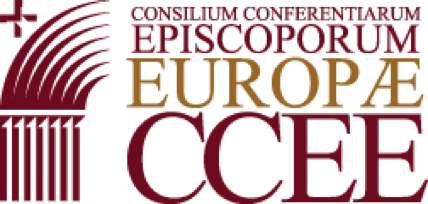From 28 to 30 October, the historic Palazzo Madama in Turin hosted the meeting of the bishops and national directors responsible for culture within the European Bishops’ Conferences, organised by the Section for Culture of the CCEE’s Commission for Evangelisation and Culture.
Before the working sessions began, participants were welcomed by Prof. Giovanni Carlo Federico VILLA, Director of the Palazzo Madama – Turin Civic Museum of Ancient Art.
H.E. Msgr. Gintaras GRUŠAS, Archbishop of Vilnius and President of CCEE, opened the proceedings by thanking the organisers and illustrated the relationship between faith and culture, which must be rediscovered in today’s Europe, marked by secularisation and cultural pluralism. We are called to inhabit the continent with an awareness of our authentic mission of evangelisation. He recalled that the Gospel remains capable of fertilising contemporary culture, cultivating a culture of peace, life and charity. “The Church must never renounce the culture, even if creating culture today seems to require greater effort of thought and discernment. However, it is a profound part of our human nature, assumed and redeemed by the Incarnate Word, Jesus Christ”, reiterated Archbishop Grušas.
H.E. Msgr. Jesús SANZ MONTES, OFM, Archbishop of Oviedo and Head of the CCEE Section for Culture, gave the introductory speech on the topic “Culture as an Instrument of Evangelisation”. In his discourse, Archbishop Sanz Montes highlighted the profound link between Christianity and European culture, emphasising that evangelisation and culture are inseparable realities: The Gospel transforms culture and, at the same time, Christian culture enriches society. He recalled the challenges that currently threaten Europe’s Christian identity, inviting us to rediscover the power of Christian thought and beauty as a cultural and moral response for today’s Europe.
In the subsequent session, entitled “Encounter and Clash between Christian Tradition and Culture in Europe”, Prof. Lluis OVIEDO, OFM, Professor at the Pontifical University Antonianum in Rome, analysed the relationship between Christian tradition and European culture, marked by tensions and transformations. He emphasised how secularisation and the loss of religious references require a new cultural and theological proposal, capable of speaking to the hearts of contemporary man. Faith, he concluded, remains a vital source of hope and humanity for today’s Europe.
The second day was dedicated to the theme “The Face of Christ, the Place of God’s Epiphany” and saw the participation of three speakers. Prof. Alfonso SÁNCHEZ HERMOSILLA, Director of EDICES, gave a presentation on the Sudarium of Oviedo, the linen cloth with bloodstains and bodily fluids consistent with flagellation and the crown of thorns, preserved in Oviedo since the VIII-IX century. Although it lacks an image, the Sudarium allows for a reconstruction of the facial features and wounds of the corpse that correspond to those of the Shroud of Turin, suggesting that both wrapped the same person. Scientific analyses confirm their historical and biological authenticity.
The second speaker, Dr. Adriana ACUTIS, Vice-President of the Carlo Acutis Foundation, presented a research project on the visible face of God, entitled “faces within the Face”, inspired above all by the Shroud of Turin and by the original painting of Merciful Jesus of Vilnius. Through studies and digital comparisons, Dr. Acutis showed striking overlapping similarities between the two faces, illustrating the powerful ability of the Divine Mercy image preserved in Vilnius, Lithuania, to offer a visible experience of the true Face of Jesus. Uniting faith, art, history and spirituality, the Shroud and the painting appear as complementary gifts from God; signs of his desire to reveal Himself to humanity in an art that heals and consoles.
H.E. Dr. Sigita MASLAUSKAITĖ, Lithuanian Ambassador to the Holy See, gave a speech on the image of Divine Mercy, presenting its history and explaining its spiritual value. The painting, created by Eugeniusz Kazimirowski in 1934 under the guidance of Saint Faustina Kowalska, depicts the risen Jesus blessing and divine mercy flowing from his Heart, represented by two rays, red and pale, emanating from His side. During the Soviet and Nazi occupations, it became a symbol of hope for the faithful in Vilnius and, after years of neglect, it is now one of the most recognisable icons of the Christian faith.
The participants in the seminar had the opportunity to listen to the presentations from the various Bishops’ Conferences present as well as take part in various cultural activities. The meeting concluded with a visit to the Chapel of the Holy Shroud and with Holy Mass at the Cathedral of St. John the Baptist in Turin, presided by H. Em. Card. Roberto REPOLE, Archbishop of Turin.

